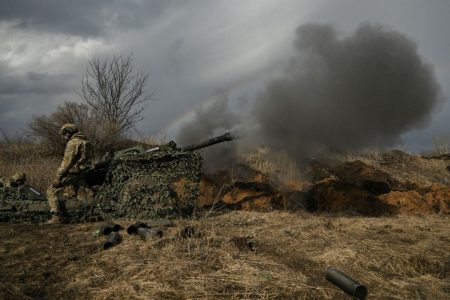The ongoing attacks by Russia on Ukraine’s power grid pose a significant risk to the country’s nuclear power plants. Energy Minister Herman Halushchenko warned that critical power substations connected to the plants are being targeted deliberately by Russia. The destruction of these substations could lead to power outages and potentially cause a radiation emergency. As nuclear generation currently covers up to 60% of Ukraine’s electricity consumption, the safety of these power plants is crucial. The International Atomic Energy Agency (IAEA) has expanded its monitoring to include Ukraine’s substations in response to the increased risks posed by the Russian attacks.
In addition to targeting power substations, Russia has launched a massive campaign against Ukrainian energy infrastructure, using drones and missiles to destroy or disable power plants. This has resulted in rolling blackouts across the country, impacting the daily lives of Ukrainian citizens. Furthermore, a Russian tank manufacturing plant in Omsk has caught fire, raising concerns about the production of military equipment, including tanks and multiple rocket launchers capable of using thermobaric warheads. The escalation of attacks on Ukraine’s energy infrastructure indicates the severity of the situation and the impact it may have on the country’s stability and security.
The potential consequences of continued attacks on Ukraine’s power grid extend beyond just power outages. The safety of nuclear power plants could be compromised, leading to the overheating of reactor cores and the release of hazardous radiation. With ten critical power substations connected to the nuclear facilities at risk, the threat of a radiation emergency looms large. The IAEA’s decision to expand monitoring to include these substations highlights the urgency of the situation and the need for international cooperation to mitigate the risks posed by Russia’s aggression.
The reliance of Ukraine on nuclear generation for a significant portion of its electricity consumption makes the safety of its nuclear power plants a top priority. With the potential for a power outage due to targeted attacks on critical substations, the country faces a precarious situation that could have far-reaching consequences. The destabilization of Ukraine’s energy infrastructure not only affects the daily lives of its citizens through blackouts but also poses a threat to the safety of its nuclear facilities. The ongoing conflict between Russia and Ukraine has heightened these risks, necessitating increased vigilance and cooperation from the international community to ensure the protection of Ukraine’s energy infrastructure and nuclear facilities.
As the conflict in Ukraine continues to escalate, the need for a comprehensive strategy to address the risks posed by attacks on the country’s energy infrastructure becomes more urgent. The targeting of critical power substations connected to nuclear power plants by Russia underscores the potential for a radiation emergency and the importance of proactive measures to prevent such a scenario. The IAEA’s expanded monitoring efforts serve as a crucial step towards enhancing the safety and security of Ukraine’s nuclear facilities in the face of ongoing aggression. With the threat of further attacks on the horizon, it is essential for all stakeholders to work together to mitigate the risks and protect Ukraine’s energy infrastructure from further harm.















